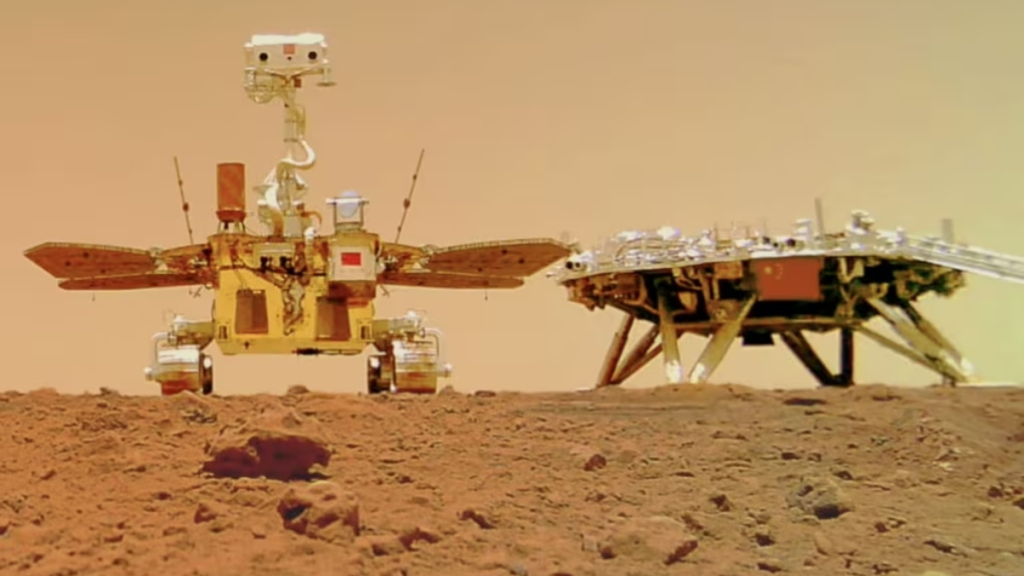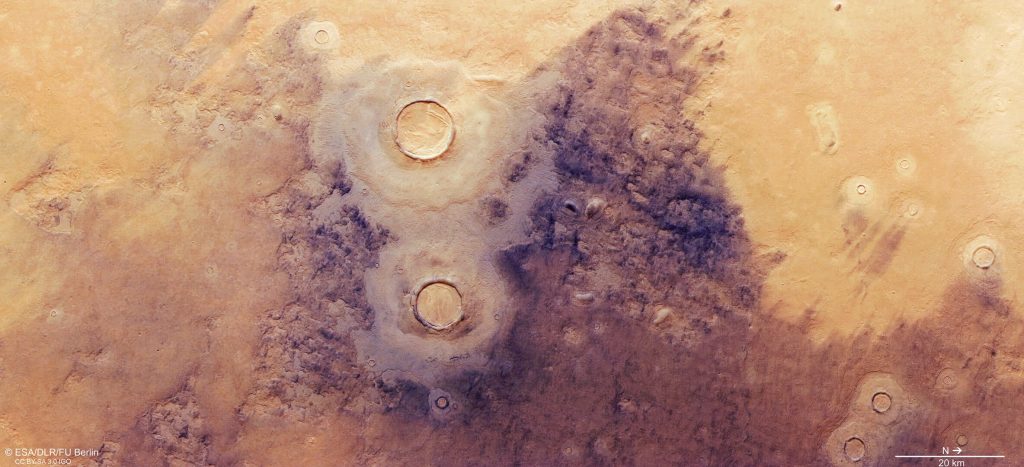This discovery was possible thanks to the Chinese Zhurong spacecraft, which identified these structures at a depth of 35 meters on the surface of Mars
China’s Zhurong spacecraft is equipped with a ground-penetrating radar system, allowing it to peer beneath the surface of Mars. Researchers announced new results from scans of Zhurong’s landing site on Mars’ Utopia Planitia, saying they have identified irregular polygonal wedges located at a depth of about 35 meters along the rover’s path. The objects measure from centimeters to tens of meters in diameter. Scientists believe the buried polygons are the result of freeze-thaw cycles on Mars billions of years ago, but they could also be volcanic, caused by cold lava flows.
Exploration of Mars with the Zhurong spacecraft
deer rover Zurong landed on Mars on May 15, 2021, making China the second country to successfully land a rover on Mars. The rovers, named after the Chinese god of fire, explored their landing site, sent back images, including a selfie with the lander, taken with a remote camera, studied the Martian terrain and made measurements using ground penetrating radar (GPR). ) tool. Zhurong’s initial mission duration was three Earth months, but it operated successfully for just over an Earth year before entering a scheduled hibernation state. However, there has been no further news about the vehicle since May 2022. Researchers from the Institute of Geology and Geophysics of the Chinese Academy of Sciences, who worked with Zurong’s data, said GPR technology provides… It is an important complement to the orbital radar explorations of missions such as the European Space Agency’s Mars Express and China’s Tianwen-1 orbiter.

Utopia Plinia
Utopia Planitia is a large plain within Utopia, and is the largest recognized impact basin on Mars (even in the solar system) with an estimated diameter of 3,300 km. In total, the rover traveled 1,921 meters during its exploration. The researchers wrote in their article published on Nature astronomyfor which the rover’s radar detected sixteen polygonal wedges About 1.2 km away, indicating a broad distribution of similar terrain beneath Utopia Planitia. These discovered features likely formed 3.7 to 2.9 billion years ago on Mars.Perhaps with the disappearance of the ancient wet environment. The ancient polygonal terrain, with or without erosion, was subsequently buried“Through subsequent geological processes. Although polygonal terrains have been seen in many areas of Mars in many previous missions, this is the first time that indications of buried polygonal features have emerged.”

Properties of Martian soil
The buried polygonal terrain requires a cold environment that may be related to water/ice freeze-thaw processes in southern Utopia Planitia. Previous research based on radar data from Zhurong suggested that multiple floods over the same time period had created several layers beneath the surface of the area. However, a massive change in the climate of Mars was responsible for the formation of these structures.
Read more:

“Internet trailblazer. Travelaholic. Passionate social media evangelist. Tv advocate.”
